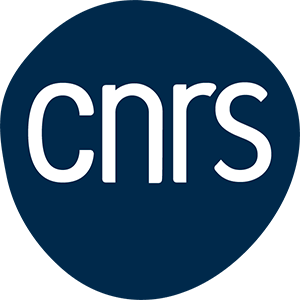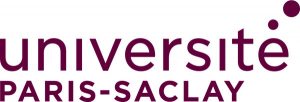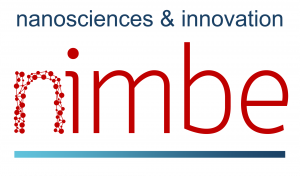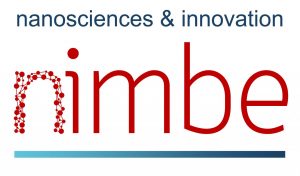Domain, Specialties : Physical chemistry
Keywords: Nanomaterials, Flame Spray Pyrolysis, physical chemistry, atomic spectroscopy, laser, aerodynamic lens
Research Unit : NIMBE / LEDNA
Summary
The objective of this internship is to develop an experimental device capable of performing in situ, real-time elemental analysis of nanoparticles during their synthesis (by flame pyrolysis). Laser-induced breakdown spectroscopy (LIBS) will be used to identify the different elements present and determine their stoichiometry.
Preliminary experiments conducted at LEDNA have demonstrated the feasibility of such a project and, in particular, the acquisition of a LIBS spectrum from a single nanoparticle. Nevertheless, the experimental setup must be developed and improved in order to obtain a better signal-to-noise ratio, reduce the detection limit, take into account the various effects on the spectrum (effect of nanoparticle size, composition, or complex structure), and automatically identify and quantify the elements present.
Full description
Scientific description:
The proposed work is part of a national effort to accelerate the discovery of innovative materials through the PEPR “Diadem” [1]. The aim is to provide the scientific community with an experimental device for synthesising specific nanoparticles in the gas phase, with an online, real-time analysis instrument to monitor the quality of the synthesis. This instrument provides immediate feedback on synthesis parameters, enabling faster convergence towards a targeted composition. More specifically, our objective is to perform in situ and real time elemental analysis of NanoParticles (NP) during their synthesis by Flame Spray Pyrolysis (FSP) [2]. Laser-Induced Breakdown Spectroscopy (LIBS) [3] will be used to identify the different elements present and, ultimately, their stoichiometry.
Preliminary experiments carried out at NIMBE [4] have demonstrated the feasibility of such a project and in particular the acquisition of a LIBS spectrum of a single nanoparticle [5]. Nevertheless, a new experimental set-up [3] is currently being developed and improved in order to obtain a better signal-to-noise ratio and increase the detection limit.
During this internship, the student will acquire LIBS signal from specific nanoparticles under vacuum and study the evolution of the signal obtained as a function of the size, composition and structure of the NP. Once the various effects have been understood and according to the time remaining, an automatic identification algorithm will be developed, as well as another one for automatic quantification.
Techniques/methods in use:
In order to carry out this internship, several benchmark materials will be selected from those currently being studied at NIMBE (Fe2O3, Fe3O4, Fe3C, FeNx, TiO2, Si, SiO2, FeCN). Before installing the new LIBS analysis chamber on the FSP device, instrumental and scientific work is first required to improve the current instrument. Thus, initially, a simple nanoparticle generator will be used to inject them into the LIBS chamber. The following improvements and studies will be carried out:
- Optimization of the optical collection system
- Optimization of the laser-NP interaction (laser focusing, pulse duration, energy per pulse, repetition rate)
- Study of the LIBS signal as a function of NP size (size-calibrated nanoparticles will be used)
- Development of complex NP analysis (multi-elements or core-shell NP)
- Determination of the detection limit
- Automatic identification and quantitative analysis of different elements
Bibliography:
- https://www.pepr-diadem.fr/
- https://iramis.cea.fr/en/nimbe/leel/advanced-synthesis-of-nanomaterials
- https://iramis.cea.fr/en/nimbe/ledna/nanoparticle-analysis-by-laser-induced-breakdown-spectrometry-libs/
- https://iramis.cea.fr/nimbe/
- “Online elemental characterization of collimated nanoaerosols by laser-induced breakdown spectroscopy of isolated particles”, Cesar Alvarez-Llamas, Nathalie Herlin-Boime, Jean-Baptiste Sirven, Olivier Sublemontier, Spectrochimica Acta Part B: Atomic Spectroscopy 225 (2025) 107122.
Applicant skills:
Final year of engineering school or Master of Science (M2 research) in physics, physical chemistry or materials. Knowledge of optics and at least one of the following areas is desirable: physical chemistry, nanomaterials, atomic spectroscopy. The lack of knowledge in several of these fields can be filled during the internship.
Location
CEA Saclay, (91) Essonne, France
Internship conditions
- Internship duration: 5 months
- Level of study: Bac+5
- Training: Master 2
- Continuation in PhD thesis: Yes
- Application deadline: 2 mars 2026
Experimental skills
Language : English
Links
- Web site of the laboratory: NIMBE/LEDNA
- Coordinates of the internship supervisor
Supervisor
Marc Briant
Phone: 01 69 08 53 05
Email :
Head of the laboratory NIMBE / LEDNA
Mathieu PINAULT
Phone: 01 69 08 91 87




